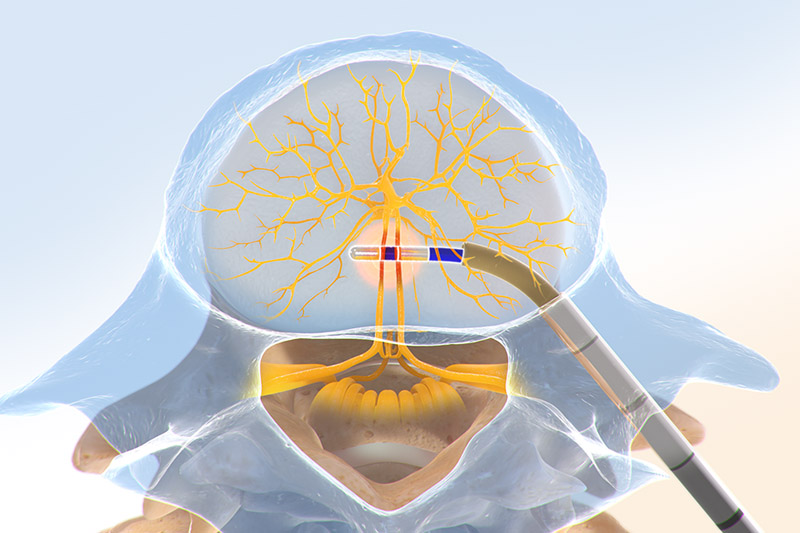Intracept in Ventura County
Intracept® Procedure: A Targeted Solution for Vertebrogenic Chronic Low Back Pain
Intracept is a minimally invasive, same-day procedure performed in an outpatient setting. It's implant-free and preserves the natural structure of the spine, targeting chronic vertebrogenic low back pain with precision.
This is accomplished by heating the basivertebral nerve (BVN) with radiofrequency energy to disrupt pain signaling — and unlike many nerves, the BVN does not appear to regenerate as a pain-transmitting pathway following treatment.

How It Works
The procedure disrupts the pain pathway by targeting the BVN:
- Vertebral endplate damage, often seen with chronic disc degeneration, causes inflammation and pain transmitted via the BVN.
- The Intracept Procedure ablates the BVN using a radiofrequency probe under anesthesia, typically completing within about one hour.
What to Expect
- Procedure Duration & Recovery: Same-day outpatient procedure with a brief recovery time.
- Pain Relief Timeline: Most patients begin experiencing significant pain relief within two weeks post-treatment.
Step-by-Step Procedure
- Step 1: Access the Pedicle - The introducer cannula is guided through the pedicle under fluoroscopy.
- Step 2: Create the Channel - A curved cannula establishes a path to the BVN trunk.
- Step 3: Place the RF Probe - The radiofrequency (RF) probe is inserted along the path and precisely positioned at the BVN trunk.
- Step 4: Ablate the BVN - Radiofrequency energy is delivered to ablate the BVN, interrupting pain signal transmission.
Why Choose Intracept?
- Minimally invasive and implant-free — preserving future treatment options.
- Long-term relief from a single treatment — many patients achieve sustained pain relief for years.
- Quick recovery and return to daily life — most resume normal activities shortly after the procedure.
- Precise targeting via advanced instrumentation — designed for safe, effective ablation.
Clinical Evidence
- Long-term studies demonstrate durable pain relief: at three years, significant improvements were observed in pain and disability scores, with large reductions in opioid use and spine injections.
- At five years post-treatment, patients reported substantial decreases in low back pain-related healthcare utilization — including a 70% decrease in opioid use and 65% fewer spine injections.
Next Steps
If chronic vertebrogenic low back pain is impacting your life, consider this:
- Discuss candidacy — review MRI results, prior conservative treatment efforts, and Modic change status with your physician.
- Learn about preparation — work with your healthcare team regarding logistics, insurance authorization, and recovery planning.
As with any medical procedure, please contact us to determine whether the Intracept Procedure is right for you.
